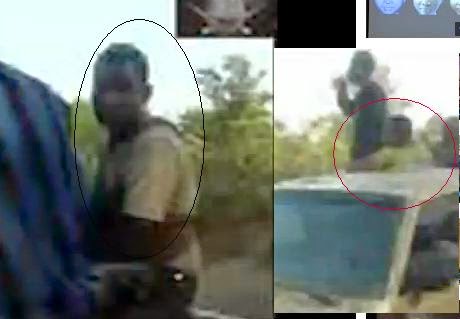Isis claims responsibility for Tunisia murders
Islamic State (Isis) has claimed responsibility for the slaughter in Tunisia’s Bardo museum. In an audio statement posted online, Isis described the museum, which houses a world-famous collection of Roman mosaics, as a “den of infidels and vice”. The attack was just “the first drop of rain”, the Associated Press quoted the group as saying. The two attackers were feted as “knights” armed with assault rifles and grenades and the group seemed to suggest that further strikes would follow.
The message was published as the family of one gunman buried him in the suburban neighbourhood where he grew up. Yassine Laabidi spent his childhood just 20 minutes from the building where his life ended amid a killing spree.
Friends and relatives of the 26-year-old gathered on white plastic chairs in the dusty street, waiting for security forces to return his body for burial, shocked and bemused by his sudden infamy.
One classmate remembered a gentle boy from classes at the nearby Omrane Supérieur school, where a group of boys played football as mourners gathered.
“He liked to enjoy himself, even with alcohol. He looked smart, you know, Nike, Adidas,” the man who gave his name as Hatem said.
The two drifted apart after graduation eight years ago; the last he heard was that his former classmate had bought a motorbike.
Since leaving school, Laabidi had been flagged up to the country’s intelligence agency, the prime minister, Habib Essid, told France’s RTL radio, although not for “anything special”.
The second gunman, Hatem Khachnaoui, had apparently managed to stay off the radar of the security forces, stretched by the apparently wide appeal of jihad to the country’s youth.
And although Tunisia – whose Jasmine revolution ushered in democratic elections – is often described as the only success story of the Arab spring, up to 3,000 Tunisians have flocked to Syria to fight, more than from any other Arab nation.
Several thousand more have been prevented from making the same journey. Al-Qaida has been around for more than a decade, using different names, and the appeal of Isis has been growing recently.
There is no information yet on what type of contacts Laabidi and Khachnaoui had with Isis, or how the group came to claim the attack; none of the group’s statements are direct messages from the gunmen.
At Laabidi’s home, no one was willing to discuss how he ended up dying in a museum shootout. A cousin said his mother was too distraught to give interviews and several of the other mourners tried to chase away journalists, insisting they had come to the wrong funeral.
As middle-aged men raised a canopy to shelter mourners, the discussion outside turned to whether the authorities would release his body for burial. “It’s getting a bit late for a burial today,” commented a neighbour. “If they give the body back today, he will spend the night in the home.”
Laabidi’s home is one of the better buildings in the area, an impeccably kept yellow villa several storeys high. The neighbourhood of Kirch al-Ghaba is named after a wood that was long since sacrificed to provide homes for migrants drifting to the capital from the provinces.
With little town planning and poor transport links to the city centre, it is still mostly home to working class families, although some residents have carved out a bit more economic security.
Not all were happy that Laabidi’s family were planning a normal funeral as the country mourned the dead and worried about the impact of the attack on jobs in the crucial tourist industry.
“We are not pleased about what happened at the museum, not one bit,” said one woman walking past with a group of friends. “And we shouldn’t really say the prayer of the dead for someone who has done something like that.”


